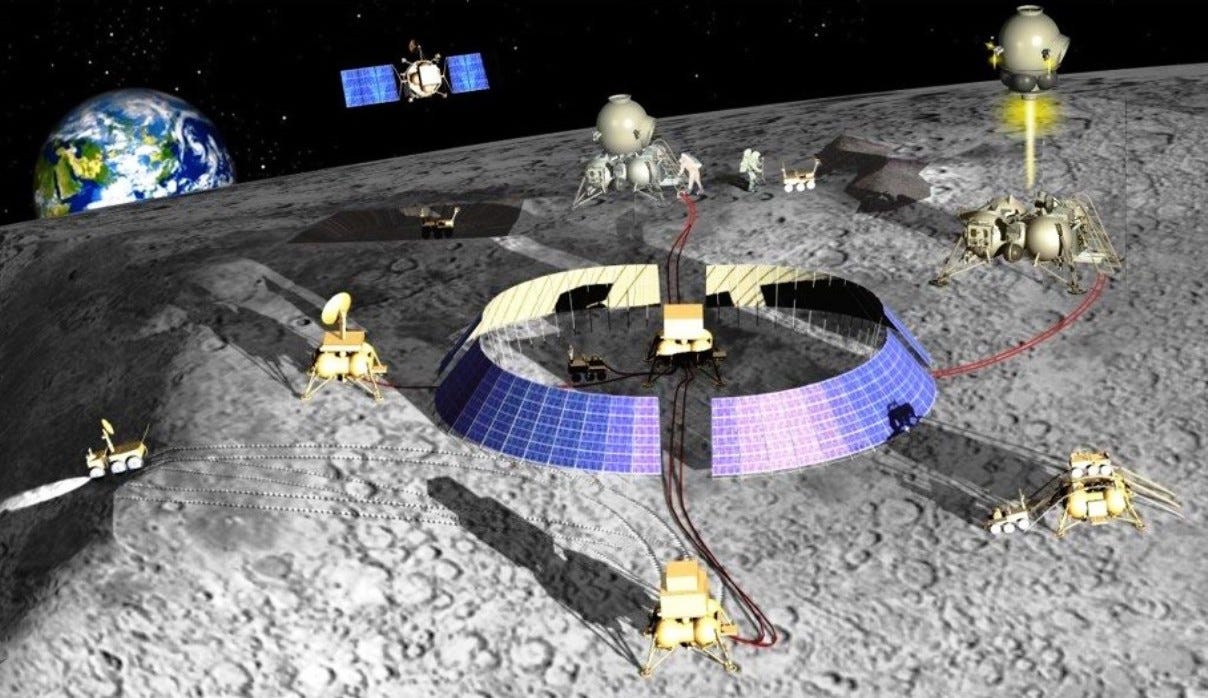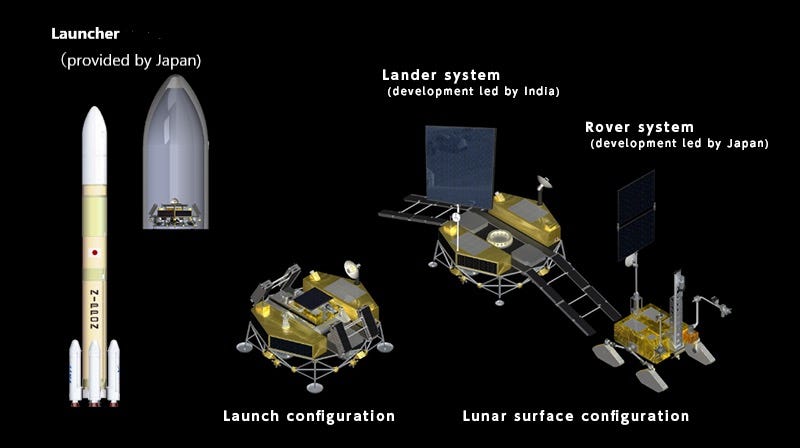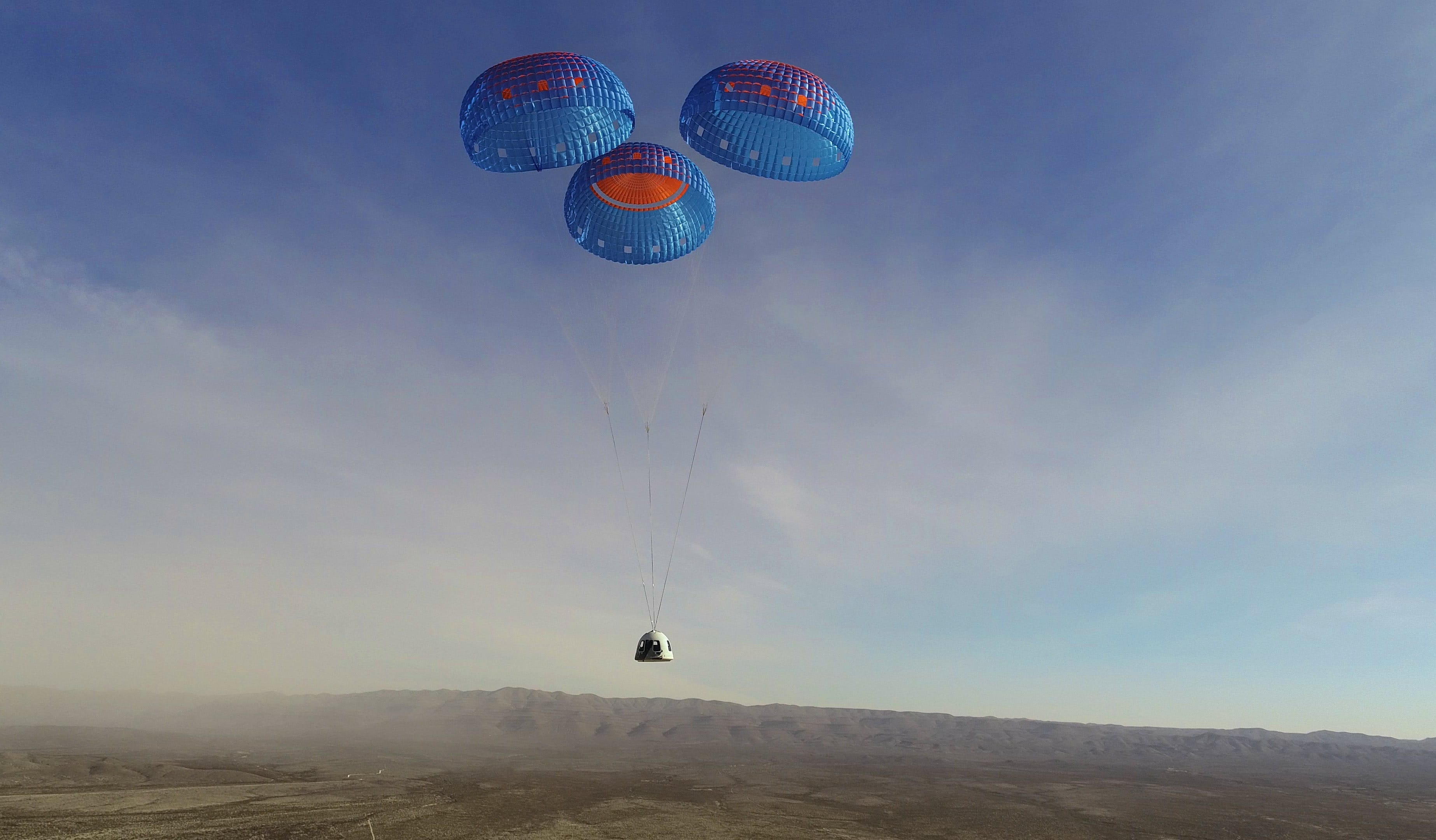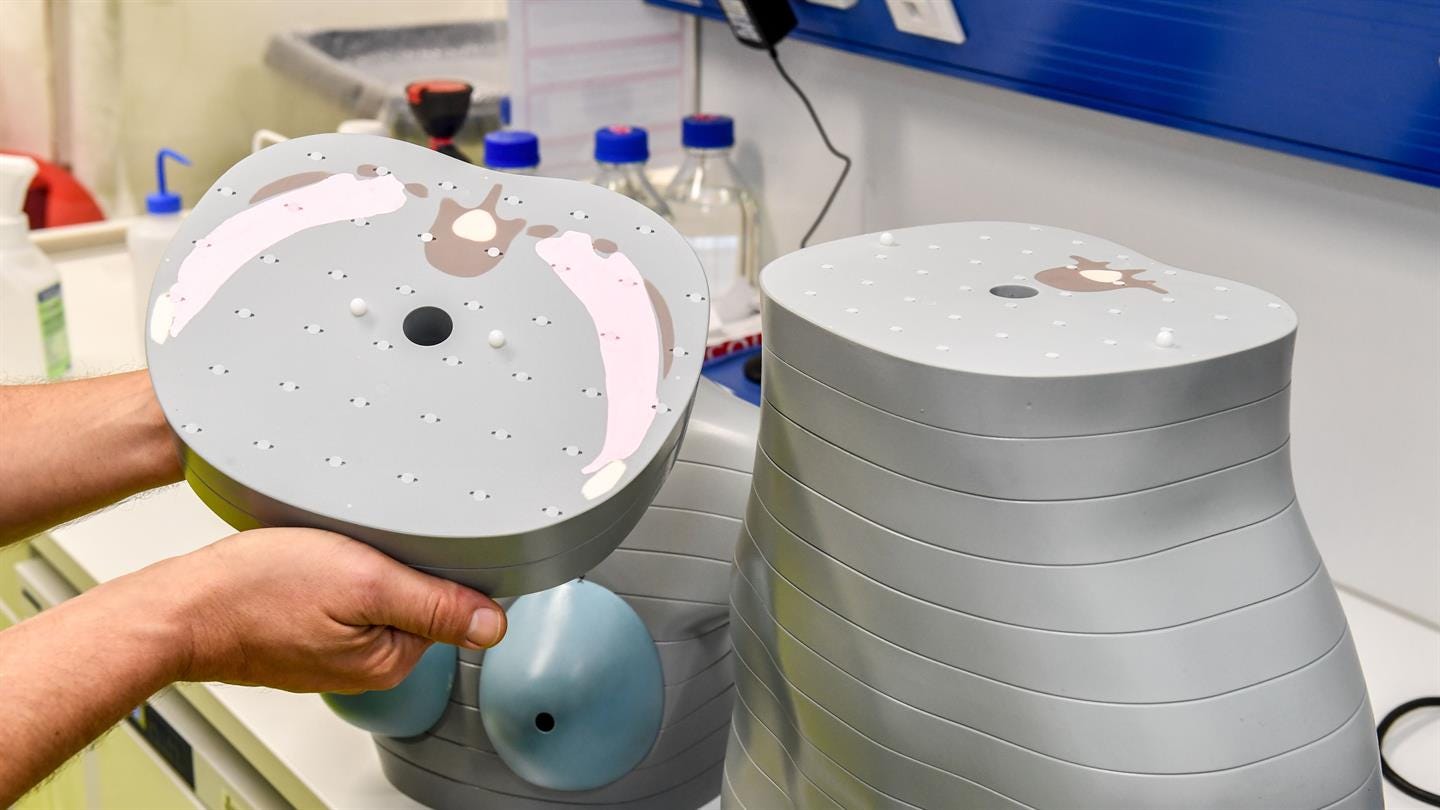Moon Monday Issue #18
China and Russia to co-build a Moon base, Japan's 2021 Moon budget, ESA to monitor radiation in the Gateway, Lunar and Planetary Science Conference kicks off, and more developments in the lunar space.
Highlight

China and Russia signed a memorandum of understanding on March 9 to co-build after 2025 the “International Lunar Research Station (ILRS)”, a scientific base on the Moon’s surface and in lunar orbit. Statements issues by their space agencies, CNSA and Roscosmos, say that the details of the Moon base are still being worked out and emphasize that the project is “open to all countries and international partners.”
This new collaboration builds on China and Russia previously agreeing to cooperate on the Chang’e 7 and Luna 27 missions as well as to establish a joint data center for lunar and deep space exploration. ILRS will be expanded with long-term autonomy in mind to then follow up with human landings and permanent settlements by 2045. Wu Weiren, the chief designer of China’s lunar exploration program, said, “This [later step of human presence] will be a long-term stay on the Moon, not a short-term stop.”
ESA, who is partnering with NASA on the Gateway lunar station, has also been involved in ILRS discussions. “At ESA we are following the Chinese lunar exploration plans very closely in order to see where our respective programmatic interest could meet, primarily the Chang’e 6, 7 and 8 missions but also the ILRS initiative”, Karl Bergquist, ESA’s international relations administrator, told SpaceNews last year.
Exploration
As part of Japan’s national budget for the fiscal year 2021, the space sector got a record allocation of 449.6 billion yen ($4.14 billion), up 23% from the previous budget. Japan’s Moon-related programs get the following amounts.
- 51.4 billion yen ($472 million) for their space agency JAXA to participate in NASA’s Artemis Moon exploration program, of which 37 billion yen ($339 million) is for developing an advanced cargo vehicle dubbed HTV-X, and 6.1 billion yen ($56 million) to develop technologies for the Gateway.
- 3.4 billion yen ($31 million) for Smart Lander for Investigating Moon (SLIM), slated for launch in Q1 2022 to demonstrate a world-first, autonomous pinpoint Moon landing that will be crucial for sustained endeavors on the lunar surface.
- 2.8 billion yen ($26 million) for Lunar Polar Exploration (LUPEX), a joint mission between JAXA and ISRO to explore the Moon’s south pole in 2023 using a JAXA-built 350-kilogram rover delivered by an ISRO-developed lander.

NASA’s SLS rocket twin boosters are now fully assembled after over three months of stacking of its segments, and are now ready to be attached to the SLS’ core stage. About the core stage, NASA will conduct its hot fire retest on March 18, after its engines abruptly shutdown about one minute into the original test. Engineers have fixed the conservative test parameters that had shut down the engines, and fixed the liquid oxygen valve that caused the retest to be delayed last month. The repeat test duration would be the same as intended before (8 minutes), and at least 250 seconds of hot firing is required to give the rocket the green signal for flight.
With backing from NASA, Blue Origin will upgrade its reusable New Shepard suborbital rocket by late 2022 to simulate lunar gravity. This will allow NASA to test and de-risk innovations critical to achieving its Moon exploration goals, such as in-situ resource utilization, regolith mining, and life support systems. Specifically, New Shepard will be upgraded to use its reaction control system to rotate the capsule on top of the vehicle at 11 RPM. This will provide at least 2 minutes of artificial lunar gravity inside the capsule, a much longer duration than the few seconds of exposure at a time provided by parabolic flights, and a much larger payload space than possible in small centrifuges on suborbital vehicles.

NASA’s VIPER rover, which will launch in 2023 to scout and map water and other resources in permanently shadowed regions on the Moon’s south pole, has its clean room ready at the agency’s Johnson Space Center. The VIPER team has entered a three-month process of assembling a full-scale replica of the rover to serve as a dress rehearsal and help identify issues before building the flight version next year.
NASA has selected six university proposals under its first-ever Lunar Surface Technology Research (LuSTR) solicitation, which is focused on accelerating development of lunar technologies. The funding is for two years and the maximum grant amount is $2 million per selection. Proposals vary from things like characterizing the strength of lunar soil on the Moon’s south pole to providing wireless power delivery to sunlight deprived areas in or near permanently shadowed regions.
Science
ESA, in collaboration with JAXA, is adding a suite of dosimeters to the Gateway lunar station’s habitat module, HALO, to monitor solar and cosmic radiation within the outpost. These dosimeters will compliment measurements taken by the European Radiation Sensors Array, or ERSA, which will be mounted outside the station. Together, these instruments will allow the scientific community to assess shielding ability of the hardware, crew health, and help build better spacecraft protection for astronauts on future deep space missions. Likewise on the first uncrewed Artemis flight around the Moon, dummies outfitted with over 5,000 radiation sensors will be onboard the Orion spacecraft to measure radiation exposure to future crew.

2021’s Lunar and Planetary Science Conference (LPSC) begins today! Over 2000 participants will present their latest scientific results and developments at the world’s largest annual planetary science conference. The conference is paid but there are special, free public sessions everyday at 12 AM UTC, two of which are Moon related.
- March 15: New research from the recently opened Apollo lunar core samples by Dr. Juliane Gross
- March 17: Dr. Renee Weber will discuss NASA’s science priorities for the Artemis Moon missions
Registered people can attend the numerous Moon-related talks and sessions too, all of which I’m listing below with links to the (freely accessible) abstracts.
Three sessions on impacts: Crater formation, changing planetary bodies, and high-impact studies
Two sessions on lunar volatiles: Endogenous volatiles and remote sensing
Lunar volcanism: Volcanisms and tectonics, a poster session, and lava flows
New results from special Apollo samples: Session 1 and Session 2
Scientific exploration of the Moon’s South Pole: Session 1, Session 2, and a poster session
Poster session on Change’e 4 and Chang’e 5 results
More lunar science:
More Moon
In line with its mission to recognize and protect historic Moon landings sites, For All Moonkind has launched a Moon registry to keep track of all hardware, objects and artifacts on the Moon. The site is still being updated with details of all missions––and anyone can contribute––but the Apollo 11 page is a good example of their goal.
Astrobotic’s first Moon landing mission, Peregrine Mission One, now has a cool mission patch.
Thank you SWISSAPOLLO for supporting me and powering this edition of Moon Monday.
Everyone, I’m publishing this one-of-a-kind Moon exploration newsletter for free, with no ads. And it will stay that way. If you like my work, support me to keep it going. Monthly supporters will be credited in future Moon Monday issues with a link to their website/social.
